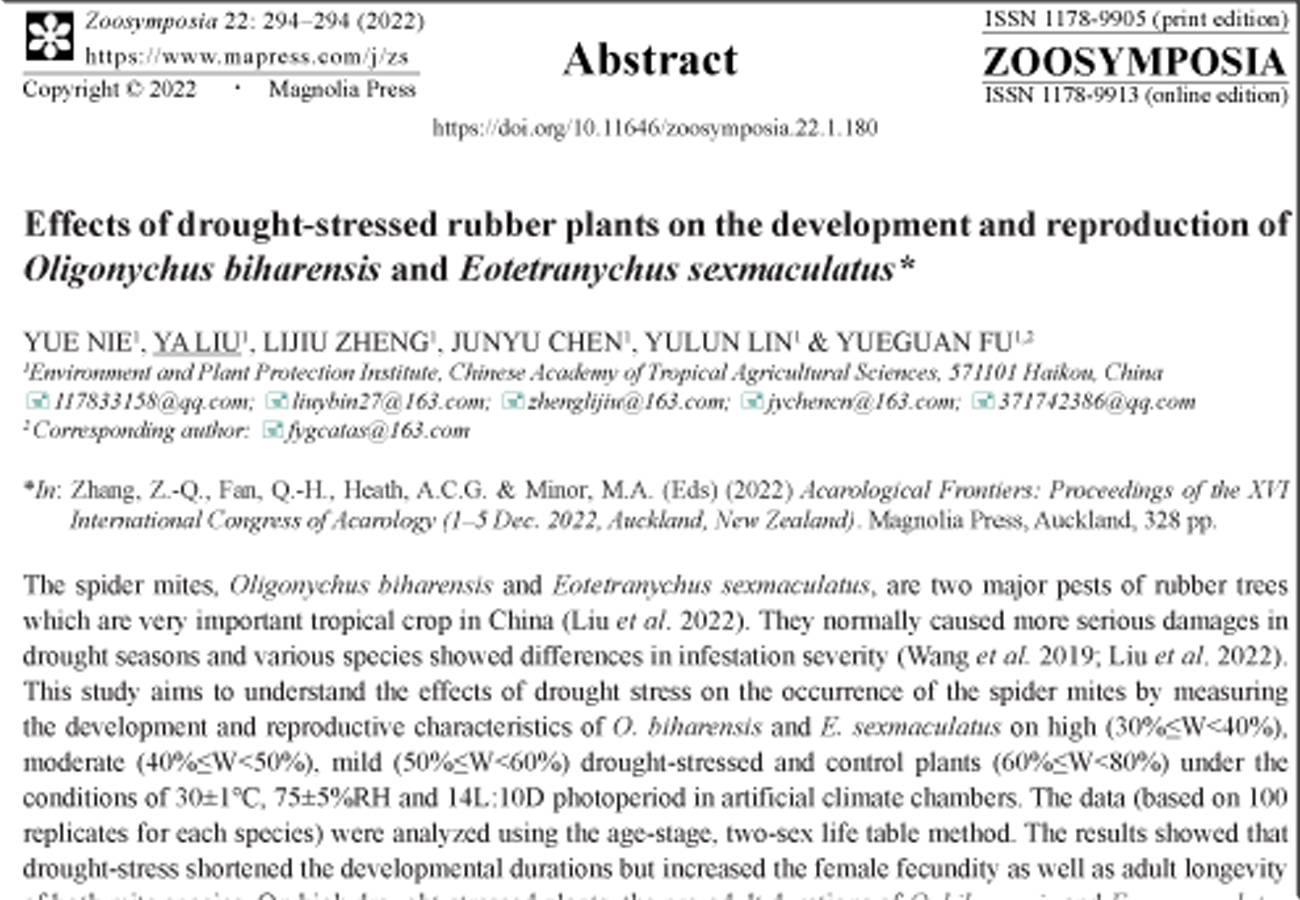Abstract
The spider mites, Oligonychus biharensis and Eotetranychus sexmaculatus, are two major pests of rubber trees which are very important tropical crop in China (Liu et al. 2022). They normally caused more serious damages in drought seasons and various species showed differences in infestation severity (Wang et al. 2019; Liu et al. 2022). This study aims to understand the effects of drought stress on the occurrence of the spider mites by measuring the development and reproductive characteristics of O. biharensis and E. sexmaculatus on high (30%≤W<40%), moderate (40%≤W<50%), mild (50%≤W<60%) drought-stressed and control plants (60%≤W<80%) under the conditions of 30±1℃, 75±5%RH and 14L:10D photoperiod in artificial climate chambers.
References
Liu, Y., Nie, Y., Chen, J.Y., Lu, T.F., Niu, L.M., Jia, J.J., Ye, Z.P. & Fu, Y.G. (2022) Genetic diversity of three major spider mites damaging rubber trees. Systematic & Applied Acarology, 27( 10), 2025–2037. https://doi.org/10.11158/saa.27.10.13
Wang, L., Xiong, Y.L., He H.N., Song X.H., Zhang, Y.K. & Duan, B. (2019) Investigation on pests and diseases of Hevea brasiliensis at Jiangbei in Jinghong City in 2017. Tropical Agricultural Science & Technology, 42 (2), 16–20.

